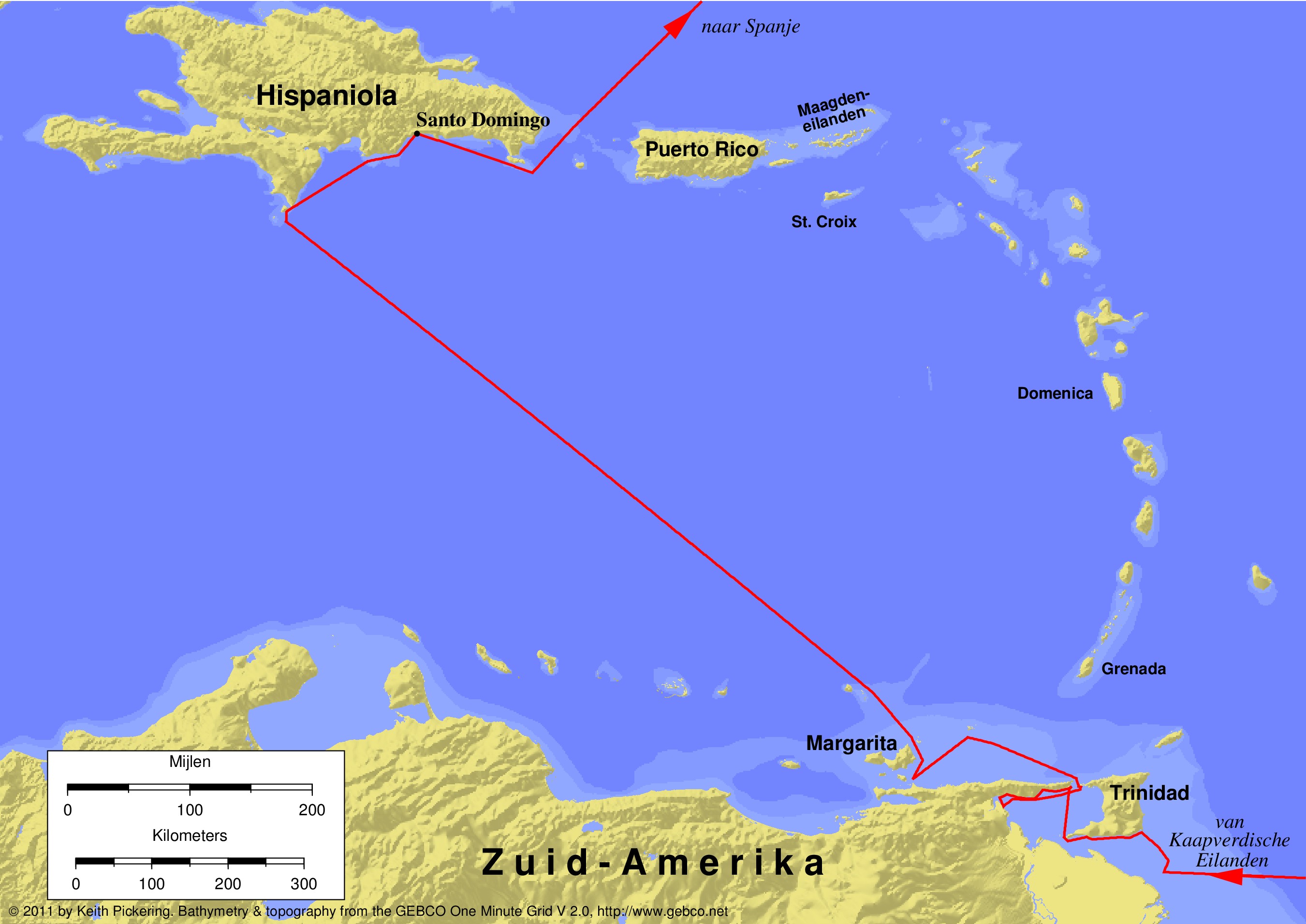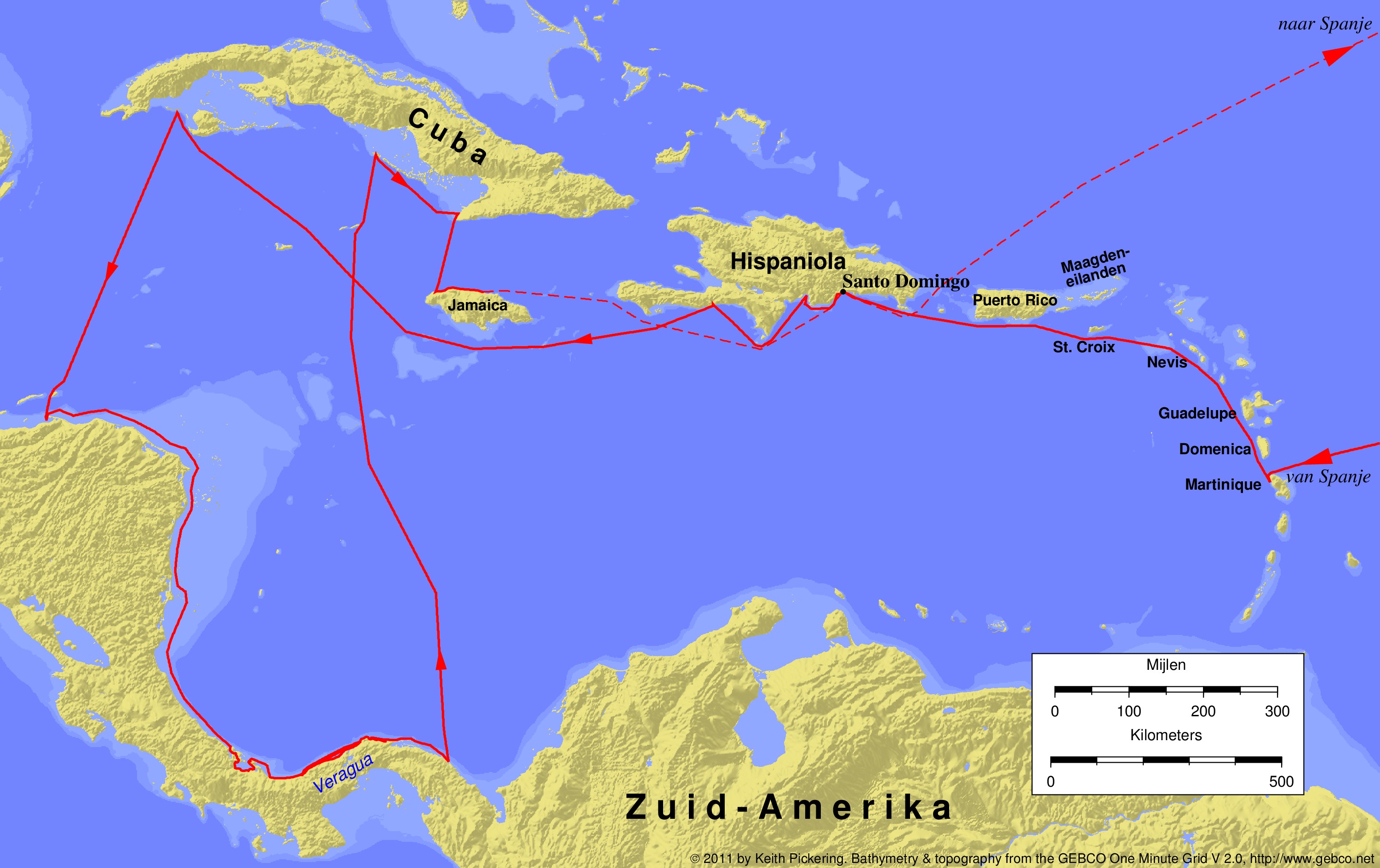Introduction
The four Caribbean expeditions that Christopher Columbus made represent a significant period in exploration and colonization history. After receiving support from the Catholic monarchs of Spain, Christopher Columbus embarked on a journey that would irrevocably alter the path of human history. The Spanish conquest of the Americas began with this expedition to the Caribbean. Columbus himself was instrumental in establishing the Spanish Empire in the New World. But contrary to what is typically taught, the narrative of Columbus and his explorations are much more complicated and intricate.
This blog article will go in-depth on Columbus’ four trips to the Caribbean, examining his encounters with the local Amerindians, his reports to the Spanish monarchs, his intentions and contentious deeds. We’ll look at how Columbus handled the difficulties of exploration and colonization and briefly discuss how his expeditions affected the local communities. We seek to shed light on Columbus’ journeys’ historical and cultural relevance through a critical perspective to reveal his legacy’s intricacies.
Columbus’ First Voyage: Interaction with the Taínos
On August 3, 1492, Columbus sailed out from Spain aboard the Nina, the Pinta, and the Santa Maria on his first trip to the Caribbean. On October 12, 1492, after a long and arduous voyage, Columbus and his men discovered land. They landed on an island in the Bahamas that he named San Salvador (the indigenous name was Guanahani). A group of native people welcomed them when they landed on the shore. They were interested in the visitors and gave them gifts of food and water.

Columbus referred to the native peoples he encountered as “Indians,” believing he had reached the East Indies. The individuals he discovered, however, were Tainos, an indigenous group that had existed in the Caribbean for thousands of years. He observed that they were unarmed, friendly, and eager to talk. Columbus also noted that the Tainos lived peacefully with their surroundings and possessed a simple agricultural system. Despite the linguistic barrier, Columbus and the Tainos communicated by gestures and a few words. The Tainos’ intelligence and ability to rapidly pick up Spanish words amazed Columbus.
On Christmas Day, the Santa Maria ran aground on the northern coast of Hispaniola (now the Dominican Republic and Haiti); as a result, Columbus founded a small settlement he called La Navidad and left 39 of his crew mates there. Columbus spent the following few months exploring other Caribbean islands, such as Cuba and Hispaniola. As he left for Spain, tensions quickly developed between the crew that stayed behind and the Tainos. They disapproved of how the Europeans had handled and mistreated the Taino people, including kidnapping several women to be exploited as sex slaves. Also, the newcomers had taken some of the natives’ belongings by force and demanded food and supplies from them. All of the crew members perished when the Tainos eventually destroyed the village.

The complicated and frequently violent nature of ties between Europeans and native peoples in the Caribbean is illustrated by Columbus’ dealings with the Tainos during his first journey. Columbus initially considered the Tainos calm and cordial, but tensions soon developed between the two groups due to cultural clashes and conflicting goals. The destruction of La Navidad foretold the confrontations that Columbus and the Spanish would have with the Caribbean natives during his following expeditions and subsequent colonization.
Columbus’ Second Voyage: Permanent Settlement and Conflict
Columbus set off on his second expedition with 17 ships and more than 1200 crew members, including soldiers, farmers, and clergy. Their goal was to remain permanently on the island of Hispaniola and carry out their gold-hunting operations. On September 25, 1493, he set off from Cadiz, Spain, and sailed southwest to the Canary Islands, where he refreshed his provisions. From there, he sailed across the Atlantic and landed on the island of Dominica on November 3, 1493, in the Caribbean. Columbus resumed his voyage of discovery in the Caribbean, stopping at places including Guadeloupe, Montserrat, Antigua, and Puerto Rico.

The Taino people, who had grown angry at the Spanish presence on their territory, greeted Columbus and his crew with hostility when they arrived in Hispaniola. Columbus discovered that the Tainos had utterly demolished the La Navidad village. According to Columbus’ logbook, the Tainos raided the village and massacred all Spanish settlers. The assault on La Navidad established the tone for the rest of Columbus’ second expedition. Columbus and his soldiers kidnapped Tainos to find gold and other resources and put them to work. He intended to impose Spanish rule over the island and demonstrate his superiority over the Tainos.

On the northern shore of the modern-day Dominican Republic, Columbus founded La Isabela as a replacement for La Navidad. Queen Isabella of Spain, who had supported Columbus’ expeditions, was honoured with the colony’s name. Columbus wished to utilize La Isabela for more exploration and conquest. It was planned to be a permanent Spanish colony in the Caribbean. However, the settlement encountered several difficulties, including a lack of food and resources, illness, and hostility from the local populace.

Columbus carried on his voyage to the Caribbean after founding La Isabela. While sailing along its northern coast, he explored Cuba’s eastern shore, where he came across the Guanahatabey and Ciboney people. Next, Columbus sailed to the coast of Jamaica, which he gave the name Santa Gloria. From there, he travelled down the western and southern coasts of Hispaniola and south Cuba. He also went to Tortuga, Navasa, and Saona, three of the area’s smaller islands.
Columbus’ Third Voyage: Upheaval, Uprising and Arrest
On May 30, 1498, Columbus embarked on his third trip from Sanlucar de Barrameda, Spain, with a fleet of six ships. Assuming that the Asian continent must be nearby, his primary objective was to travel further south of the islands he had discovered on his first two expeditions. Columbus first made his way to the Cape Verde Islands, located off the coast of Africa, before continuing across the Atlantic to the continent of South America and landing close to the mouth of the Orinoco River. Before arriving at Margarita Island, he explored the Gulf of Paria and the island of Trinidad as he continued to sail west along the South American coast.

Columbus interacted with several indigenous peoples throughout his expeditions, including the Warao, Arawak, and Carib peoples. Many of these tribes, he wrote in his journal, were friendly and peaceful, giving him and his crew food and supplies. The fleet found water on Trinidad’s south coast. While there, they became the first Europeans to observe South America’s coastline. Due to his ill health, Columbus ordered the fleet to head northwest by north for Hispaniola. They arrived off southern Hispaniola on August 19, 1498.
Columbus discovered Hispaniola in a state of disorder and uprising when he arrived. The colonists encountered many difficulties, such as unfavourable living circumstances, illness, and clashes with the native communities. These difficulties caused the colonists’ discontent, which eventually manifested in several uprisings against Columbus’ rule. The Spanish colonists opposed his brother, Diego Columbus, who had been named governor of the island, claiming that Columbus had misled them about the allegedly abundant riches they anticipated finding.

The Spanish Crown appointed Francisco de Bobadilla in 1500 to investigate the complaints against Columbus and his brothers, including charges of misuse of authority and mistreatment of colonists and indigenous. In addition, Bobadilla was charged with putting the colony’s discontent and revolt under control. Bobadilla detained Columbus and his brothers when he arrived in Hispaniola and sent them back to Spain in shackles to face charges. Tyranny, cruelty, and incompetence in colony administration were among the accusations against them.
Columbus’ Fourth Voyage: Central America and Calamity
Columbus had to stand trial in Spain before setting sail on his fourth and last trip to the Americas. Many charges brought against Columbus by some of the colonists he had ruled during his third journey led to this trial. These colonists charged Columbus with mismanaging the settlement, employing undue force to keep things under check, and enriching himself at their expense. Columbus was put on trial by the Spanish Crown, and even though he was ultimately exonerated of the majority of the accusations levelled against him, he lost his governorship and a lot of his power. Despite this setback, Columbus was resolved to set out on his fourth expedition, which he hoped would take him to Asia.

Columbus departed from Spain in May 1502 aboard the Santiago de Palos, Gallega, Vizcana, and Capitana. This journey would be his most challenging and dangerous, with numerous obstacles and setbacks. On June 15, he arrived on the island of Martinique. Because he had a ship that needed to be replaced and a hurricane was expected, he decided to go to Hispaniola despite being prohibited from doing so. Nicolás de Ovando, the governor of Santo Domingo, had refused Columbus and his crew safe harbour, so they took refuge in a neighbouring estuary.
After the hurricane, Columbus and his crew regrouped and set sail for contemporary Central America, arriving at Guanaja (present-day Honduras) after making brief stops to resupply in Jamaica and off the coast of Cuba . Here, Columbus had a significant encounter with a group of locals who never had before encountered Europeans. Many people believe that these individuals are Yucatan-born Mayans. Columbus saw these indigenous people as hospitable and inquisitive and forged an amicable trading relationship.

Columbus did not always have amicable interactions with the local people, either. Columbus and his crew were cautioned against travelling inland in pursuit of gold when exploring the coastal districts of Central America (modern-day Honduras, Nicaragua, and Costa Rica). The Spanish were then ambushed by a group of natives in Panama after they had captured one of the Indians’ commanders. The raid claimed the lives of several Spanish sailors, resulted in the capture of many more, and severely damaged their ships. On April 16, Columbus reluctantly set out for Hispaniola, and his boats later suffered additional damage in a storm off the coast of Cuba. On June 25, the ships were stranded in St. Ann’s Bay, Jamaica, unable to continue their journey.
Columbus and his crew did what they could, dismantling the ships to create defences and shelters. They developed ties with the locals, who provided them with food. Columbus was able to inform Ovando of his situation, but Ovando needed more means and the desire to assist. Columbus and his troops remained in Jamaica for a year, enduring storms, mutinies, and an uneasy peace with the locals. Columbus impressed the locals by accurately predicting an eclipse using one of his books. Columbus and his crew were finally retrieved in June 1504 by two ships. As he returned to Spain by ship on November 7, he discovered that his biggest ally, Queen Isabella, had written her own will and was near death.

Conclusion
In conclusion, the four Caribbean journeys led by Christopher Columbus represent a crucial juncture in the history of exploration and colonialism. Columbus’ voyage’s historical and cultural significance is far more nuanced than is commonly taught. Yet, it played a vital role in establishing the Spanish Empire in the New World. Columbus made four visits to the Caribbean. There was hostility, violence, and exploitation between the Europeans and the locals on each occasion. Understanding his legacy requires an awareness of his interactions with the indigenous Amerindians, his reports to the Spanish kings, and his objectives and controversial behaviour. Columbus’s relationships with Caribbean Indians throughout his journeys were complicated and frequently violent, which shows how cultural misunderstandings and competing interests resulted in conflicts between the two groups.
References
- Morison, Samuel Eliot. Admiral of the Ocean Sea: A Life of Christopher Columbus. Little, Brown, 1942.
- Sale, Kirkpatrick. The Conquest of Paradise: Christopher Columbus and the Columbian Legacy. Vintage Books, 1991.
- Phillips, Carla Rahn, and William D. Phillips. The Worlds of Christopher Columbus. Cambridge University Press, 1992.
Average Rating
One thought on “Christopher Columbus and the New World: The Story of His Four Voyages”
Good insight
Comments are closed.